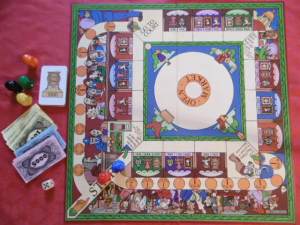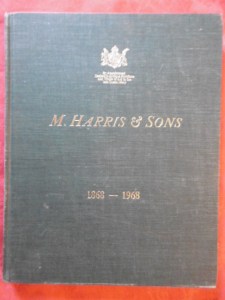As many of the readers of the Antique Dealer research blog will know, one of the themes I have been investigating as part of the Antique Dealers Research Project has been the ways in which ‘antique dealers’ have been represented in historical visual and literary culture. As part of the research activities dominated by this theme I’ve been assembling books and ephemera associated with the construction of the identity of the antique dealer over recent years; and there are literally scores of books by/on antique dealers, and a wide range of fascinating ephemera – of which more in a later blog post perhaps?
But anyway, the representation of art dealers and agents for art, as well as dealers in antiques and curiosities, is something that I have been working on, off and on, for over 10 years. And it’s clear, from my research, that a distinctive trope has emerged in relation to art and antique dealers. A key example from the 18th century would be the character of the art dealer called ‘Puff’ in the satirical play Taste (1752) by the writer Samuel Foote. This trope of the dealer as ‘problem’ takes on particular formation in 19th century culture. For example, the stylistic character of the dealers Remonencq and Magus in Honore de Balzac’s novel Cousin Pons (1847), or the personal qualities of the character of ‘Grandfather’ of Little Nell, in Charles Dicken’s Old Curiosity Shop (1840). There’s a lot more to say on these developments of course – but I thought readers of the blog might be interested to see a more recent, late 20th century example, of the continuing legacy of these highly significant identities.
One of my recent purchases (in a local charity shop no less) is this board game, produced by the Leeds based manufacturer Waddingtons in 1976, called ‘SWINDLE’.
The game is a fascinating example of the continuing trope of the antique dealer as ‘problem’. As the tag line for the ‘Swindle’ game itself suggests ‘The great game of dubious antique dealing for 3 to 6 ‘swindlers’ 9 years and upwards’.
The publicity for the board game continues to rehearse this, now, very common trope. The players in the board game take on the role of a ‘dubious’ ‘antique dealer’ – and even the player pieces themselves reinforce the idea of the dealer as implicitly untrustworthy – the pieces are shaped as the moulded head of a, quite obviously, dubious character – (the chap looks like a ‘cad’!)
The publicity information on how to play the game continues these implied, and explicit, suggestions about the role of antique dealers in contemporary culture. Players are tasked with some quite revealing rhetorical questions – ‘How convincingly can you pass off a Plaster of Paris bust as a genuine marble antique?’, it states; and ‘How good are you at picking the difference between a real Regency chest and a cheap chipboard swindle?’
‘A super-cool bluff are essentials for players in this action-packed game of dubious antique dealing’ -states the publicity on the cover of the board game.
These stereotypes and tropes are, as I suggest, something that emerges as a distinctive form in the 18th century, but becomes more embedded in the cultural consciousness in the 19th century – indeed, it is perhaps no coincidence that these notions settle into familiar patterns at the same moment that the conjunction of ‘art’ and ‘money’ develops as a discrete anxiety. But these speculations and observations are perhaps better left to a longer, deeper analysis, rather than attempting to deal with them here – it is interesting though, that a piece of ephemera, a now probably long forgotten board game from the 1970s, has such a fascinating genealogy, and that a popular board game can open up the prospect of deeper critical analysis of perhaps one of the most fascinating tropes in art and culture?
Mark








